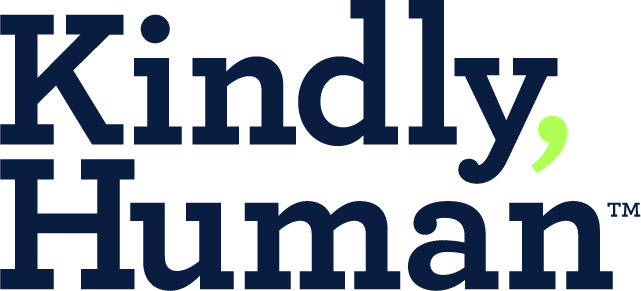Three Reasons Your Employee Benefits Ecosystem is Better with Professional Peer Support
Peer support fosters connection between humans. It’s an important resource that cuts across your mental health, culture, diversity, equity and inclusion (DE&I), and well-being initiatives. Learn why adding peer support improves your benefits ecosystem.
If your company has seen an increase in benefits designed to offer relief to those struggling with mental health, you’re not alone. Growth fueled by the pandemic resulted in 92% of employers expanding support for mental health and emotional well-being. (1)
Now many human resources (HR) executives are grappling with how to connect all of the investments they’ve made – and how to maximize employee awareness and use of benefits.
Peer-based mental well-being resources deepen the strategic connections throughout the benefits ecosystem and promote engagement with an increasingly diverse and dispersed workforce. Here’s how.
1. As the workforce ecosystem shifts, peer support propels your strategy and culture forward.
Half of employers today are focused on how they can support traditionally underrepresented communities. (2) So HR teams need resources that reach the historically “nontraditional” worker while positively impacting talent, culture, productivity and retention. (3)
Offering peer support from people who share life experiences and cultural backgrounds with employees addresses inclusivity and belonging across your organization. Having a way to “release” stress and be heard results in feeling validated. Your culture and individual employees benefit when professional peer support is available.
2. 100% of your workforce can access and be helped by peer support.
Employers have responded to the mental health crisis with broader clinical care services such as therapy platforms and expanded coverage for counseling. At the same time, they are heavily promoting EAPs so employees know they exist.
This mix of established and new mental health benefits, though, can fall short when it comes to accessibility and reach.
A shortage of mental health professionals has led to wait times of 6 weeks or longer to access services. (4)
Some employees have concerns about privacy or accessibility when it comes to EAPs, which may contribute to only 4% of employees using it each year. (5)
Not every concern requires a clinical first step. A Kindly Human national survey discovered that 89% of employees agree that “professional peer support” is likely to help before someone needs clinical care or medication.
Peer support is an equitable, easy-to-use starting point for anyone dealing with an everyday life concern like financial stress, career navigation, caregiving, relationships, and more. Mental well-being partners like Kindly Human provide the fastest path to preclinical support for everyone, along with personalized navigation assistance to other resources and care when appropriate. Peer support complements many other well-being, culture, talent, leadership, and DE&I programs.
3. Peer Listeners are also navigators who increase engagement.
Employers have doubled their investment in mental health programs in the last two years, yet still face challenges when it comes to getting people to use available benefits. (6) A third of your employees may not seek professional mental health help because (7):
22% fear stigma and people knowing.
34% don’t know what kind of help they need or where to get it.
36% prefer self-help.
Kindly Human’s trained peers can refer employees to company-specific and outside resources, whether they need crisis support, access to a clinician, or other well-being services. Also, employees who are not ready to talk can browse on-demand Peer stories and explore self-help resources without worry of anyone else knowing. Access to your company’s resources is a keyboard tap or conversation away.
At a time when 37% of the country lacks mental health services in their community (8) and digital point solutions struggle to engage 10% of the workforce, peer support fills a critical gap. (9) It supports employees when they need it and elevates awareness of other mental well-being benefits. And employees will say they value peer support benefits. After all, 84% of employees find talking with a peer a healthy starting point when they are facing a personal issue. (10) And nearly everyone prefers to talk with someone like themselves.
To learn more about peer support for your organization, schedule a demo today.
References
https://hrexecutive.com/how-much-are-employers-investing-in-wellness-programs/
https://www.businessgrouphealth.org/who-we-are/newsroom/press-releases/2022-fidelity-survey
https://www2.deloitte.com/us/en/insights/focus/human-capital-trends.html?id=us:2ps:3gl:hc23w1:awa:cons:011723:well-being%20at%20work:b:c&gclid=Cj0KCQiAq5meBhCyARIsAJrtdr6geCYvHFGkRvT4n3i-yqzvT7t0r3KePgDLf2BNO-o9h6KskphR6y4aAjTMEALw_wcB#unlocking-the-workforce
https://www.psychology.org/what-to-do-on-a-therapy-waitlist/#:~:text=The%20National%20Council%20of%20Mental,times%20can%20stretch%20into%20months
https://mhanational.org/how-can-we-promote-our-eap-increase-its-usage
https://www.businessgrouphealth.org/en/resources/13th-annual-health-and-well-being-survey
https://www.forbes.com/sites/michaeltnietzel/2021/05/24/why-so-many-americans-do-not-seek-professional-help-for-mental-disorders/?sh=66eab8083de7
https://usafacts.org/articles/over-one-third-of-americans-live-in-areas-lacking-mental-health-professionals/
https://www.benefitnews.com/advisers/opinion/digital-health-programs-can-spark-employee-utilization
Kindly Human employee survey, 2022


